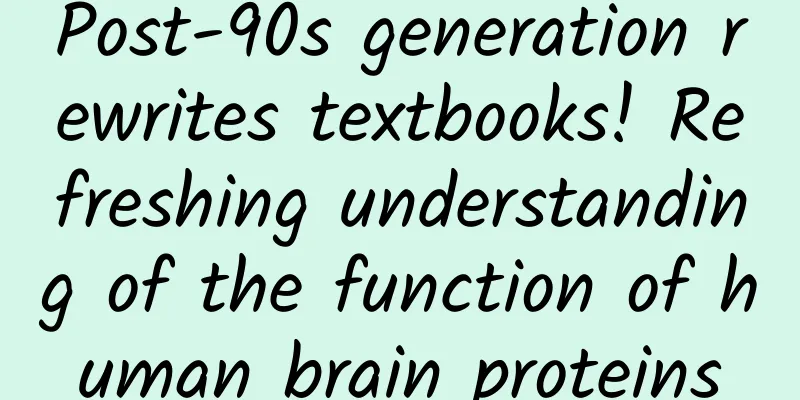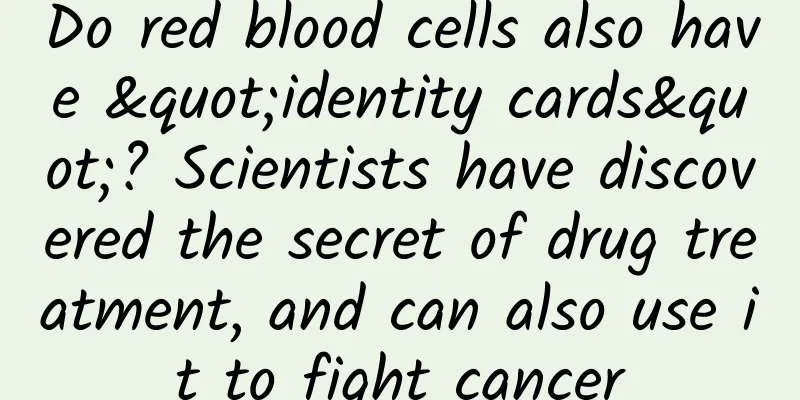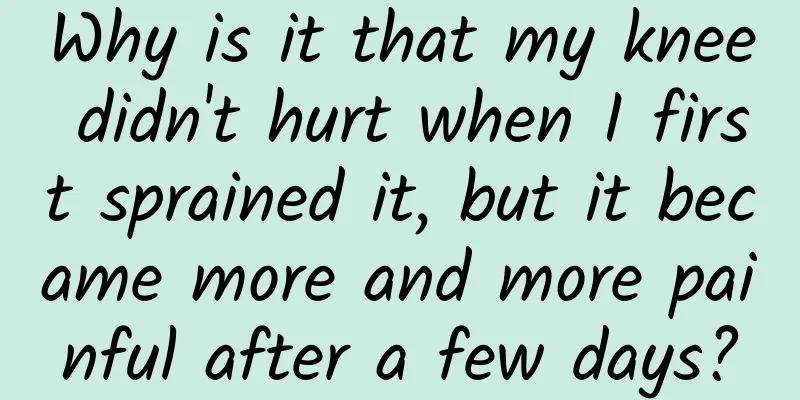Post-90s generation rewrites textbooks! Refreshing understanding of the function of human brain proteins

|
Looking at the rejection letter in the mailbox, Sun Chao was stunned for several seconds. This is a rejection letter from "Science". In the attachment, the three reviewers gave unanimous praise: "This is an amazing study. It is foreseeable that it will have a far-reaching impact after publication." However, the editorial department did not adopt the reviewers' opinions, but gave the conclusion of refusing to publish. Faced with the opposite attitude, Sun Chao's team wrote a second email to the editorial department of the magazine to seek a chance to revise. This time, the editorial department agreed. After only one revision and one review, this rejected study was successfully published at a "miraculous speed" in May this year. This is also the first time that Sun Chao, 32, has published in the main journal of "Science" as the first author. "If you ask one more question when submitting a manuscript, there may be a turning point." Sun Chao, who has served as an independent PI at the Institute of Translational Neuroscience at Aarhus University in Denmark, said with emotion. Sun Chao published a Science paper as the first author A discovery that "rewrites the textbooks" This study, published in Science, comes from the Institute for Brain Research under the famous "Nobel Prize Factory" - the Max Planck Institute (hereinafter referred to as the Max Planck Institute) in Germany. The brain is the most advanced part of the human nervous system and also the most complex and sophisticated instrument. Sun Chao's research object is the most inconspicuous "cleaning soldier" in the brain's operating system - the proteasome. The human brain has more than 100 trillion synapses. These synaptic connections define neural circuits and store information throughout the life cycle. However, the average "shelf life" of the main functional molecule protein in the synapse is only one week. The "cleaning soldier" proteasome is responsible for the "garbage disposal" of old proteins. It is generally believed that the proteasome is composed of two complexes, 19S and 20S, which appear in pairs and work at the same time: the former is responsible for "command" and recognize old proteins; the latter is responsible for "execution" and decomposition of old proteins. However, the Max Planck Institute team where Sun Chao worked during his postdoctoral period found that the two proteasome components do not correspond one to one in brain synapses. The 19S regulatory complex is twice as many as the 20S regulatory complex, and 70% of the 19S regulatory complex is in a free and independent state. More importantly, the free 19S regulatory complex seems to interact with many synaptic proteins, including those involved in the release and detection of neurotransmitters, thereby regulating information transmission and storage at synapses. This means that complex protein machines may have adapted to subcellular needs and "part-time" some replacement functions. This study has updated human cognition of the function of synaptic proteins from a new dimension, and is more helpful in treating neurological diseases with synaptic dysfunction such as Parkinson's and Alzheimer's disease. It can be said that this is a discovery that rewrites textbooks. "We are very confident in our work, so when we received the rejection letter, we were more confused than disappointed." Sun Chao speculated that it might be as the reviewers commented that this study had a foreseeable far-reaching impact, so the editorial department of Science would directly reject the manuscript when the short time was not enough to perfect the experiment. As a contributor, Sun Chao is well aware of the natural inequality between himself and top journals. He said: “For top journals like Nature and Science, if you accidentally miss an article, it is not a big loss; but for contributors, it is an important opportunity that must be fought for.” Find the right hammer to hit the nail Sun Chao said that the biggest difficulty in biological research is to have both a "hammer" and a "nail", that is, the adaptation of methods and problems. He used an analogy: "A scientist who does methodology is holding a hammer, but does not know which nail to hit; a scientist who does biology is finding a nail, but does not know which hammer to use." Taking this latest study published in Science as an example, there have been few studies on the "part-time" phenomenon of proteasomes in the past. The reason is that this group of "cleaning soldiers" is too small to be observed using conventional methods. If there is an observation technology that can be magnified almost infinitely, it can be clearly seen that there are tens of billions of nerve cells in the brain, hundreds of synapses on each nerve cell, hundreds or thousands of proteins on each synapse, and the "cleaning soldiers" 19S and 20S proteasomes shuttle between these proteins. This magical technology is the "hammer" used by Sun Chao in this study - DNA-PAINT imaging technology. This technology, developed by the Max Planck Institute for Biochemistry, is an extension of super-resolution fluorescence microscopy. Instead of identifying proteins through traditional fluorescent molecules, it directly labels protein DNA sequences to obtain high-fidelity images with nanometer resolution. In 2014, super-resolution fluorescence microscopy won the Nobel Prize in Chemistry. At the award announcement that year, Sven Lidin, then chairman of the Nobel Prize Chemistry Committee, pulled out a strand of his own hair to explain this breakthrough to everyone. A human hair is about 100 microns in diameter, which can be easily seen with a traditional optical microscope; but a bacterium is only about 200 nanometers in diameter, which has exceeded the limit of traditional optical microscopes. The super-resolution fluorescence microscopy technology developed by three scientists including Professor Stefan W. Hell of the Max Planck Institute has broken through the limits of traditional optical microscopes and brought the observation of the microscopic world into the nano era. "If the technical threshold of a research is relatively high, the risk of being robbed will be relatively low." Sun Chao concluded. From the first contact with DNA-PAINT imaging technology to sending the observation results to Science, it took his team 9 years. If the "nails" of biologists and the "hammers" of methodologists join forces, will it bring higher efficiency? In theory, but in practice, such cooperation is difficult to achieve. Sun Chao explained: "Different work fields have different concerns. It is difficult to find a research problem that fits the common interests of methodologists and biologists." "For a biologist, it is more important to find a research problem that interests you and then find a suitable method to solve it." In the view of Erin Schuman, the corresponding author of this study, founder and director of the Max Planck Institute for Brain Research, the logic of "finding the nail to make a hammer" is more suitable for biologists. In March of this year, Erin won the "Brain Prize" (The Brain Prize), known as the Nobel Prize in neuroscience, which is also one of the highest honors in the field. In response to long-standing questions of interest, Erin Schuman's laboratory has developed new tools, BONCAT and FUNCAT technologies, that can label, purify, identify and visualize newly synthesized proteins in neurons and other cells. "You may not understand this method at the moment, but you have to learn it, master it, or find the right helper until you can solve the problem." Erin added, "More importantly, don't let the existing technology limit your imagination of a problem." Cheers to a new beginning "Cheers! We finally submitted the paper." After each submission, Director Erin Schuman would treat lab members to a drink at her own expense. This has become a tradition of the Max Planck Institute for Brain Research. Strong liquor is Erin's favorite. A glass of 40-50 degree tequila is enough to relax the tense nerves of doing research. When the last article was published, Erin took the team to a Sichuan restaurant in Frankfurt to celebrate. There was no strong liquor in the restaurant, so they had to use beer instead. Last August, Sun Chao's team submitted a paper to Science. At the moment of raising the glass to celebrate, Sun Chao had a premonition of separation: this was his last research at the Max Planck Institute, and submitting the paper meant that this five-year postdoctoral journey was about to come to an end. In March this year, Sun Chao officially started his PI stage at Aarhus University in Denmark. "It's like getting a driver's license and having to go on the road by yourself." At the beginning of his employment, Sun Chao was busy getting familiar with the new environment and setting up a laboratory. For quite a while, he couldn't do experiments or deal with data. He laughed and said that he "felt like doing a completely different job." The Institute of Translational Neuroscience at Aarhus University, where Sun Chao is located, has a long history of neuroscience research. In 1997, Jens Christian Skou, a biochemist at Aarhus University, was awarded the Nobel Prize in Chemistry for the first discovery of the "sodium pump." For Sun Chao, another attraction of Aarhus University is its abundant funding. Biological research has high requirements for instruments and equipment. An Abbelight SAFe 360 super-resolution fluorescence microscope is worth 4 million yuan. At the Institute of Translational Neuroscience, Sun Chao's start-up funds exceeded 10 million yuan, so recruiting people was not a problem. When recruiting partners, Sun Chao pays the most attention to the initiative of researchers: "I want to create a free scientific research atmosphere for the laboratory, where members of the group can take the initiative to find research problems of interest and arrange their time and energy allocation independently. I also welcome Chinese PhDs and postdoctoral students to work in my laboratory." This concept coincides with the "Harnack Principle" upheld by the Max Planck Institute. This principle was proposed by Adolph von Harnack, the first president of the Kaiser Wilhelm Society, which was founded in 1911, the predecessor of the Max Planck Institute, and has been successfully applied for more than a hundred years. Its core is people-oriented, allowing the best candidates to independently choose research objects and freely use research resources. Today, Sun Chao's new laboratory is gradually getting on track. The 32-year-old young PI has also entered a new stage of scientific research. "Farewell means a new beginning," he once quoted Eliot's poem on social media: "We will continue to explore, and the end of the exploration will arrive at the starting point." |
<<: The secret of blood purification: How to maintain kidney function?
Recommend
Can breast enlargement exercises enlarge breasts? Natural breast enlargement methods
Women all want to have proud breasts, but the fac...
What is the test for female hormones?
Hormone testing for women is a common examination...
The past and present of progesterone: Unlocking its life code
Patients often hold test results and ask: Doctor,...
Pictures of bleeding during sex after pregnancy
During pregnancy, couples need to be careful abou...
HPV vaccine in Beijing
What are the side effects of the HPV vaccine? The...
What is the normal range of anterior uterine size?
Generally speaking, the normal size of the uterus...
Why is the menstrual flow decreasing?
Menstruation is very important for female friends...
Will having a cyst during pregnancy affect the fetus?
Some pregnant women are found to have erythema du...
It hurts to urinate after the first time.
An indispensable and beautiful part of life is se...
What kind of body will not edema during pregnancy
Everyone's physical fitness is different duri...
Why is my period not clean at 48 years old?
Instant menstruation may be a defect of today'...
Can a girl have sex when she's on her period?
Can I have sex during my menstrual period? Many f...
How women can delay menopause
For female friends, the most feared thing is agin...
Breast hyperplasia pain every day
Many people become very scared when they hear abo...
Leucorrhea yellow and green pictures
Under normal circumstances, women secrete secreti...









